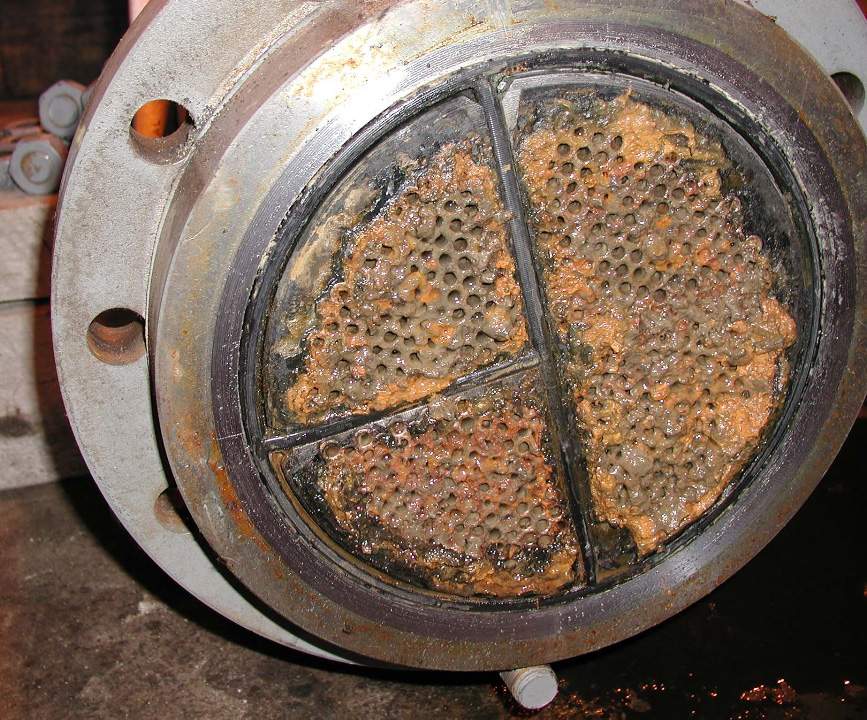Understanding Biofilms: What, When, and Where
Overview of a Biofilm
A biofilm is a colony of microorganisms held together by extracellular polymeric substance (EPS) and is ubiquitous on any non-sterile wetted surface. They can contain (in addition to the microorganisms themselves) microbial secretions, corrosion products, and entrapped clay and soil materials. Biofilms are present in a broad range of industrial, environmental, human health, and agricultural systems including drinking water, industrial process systems, medical and dental infections, food production and spoilage, and energy production among others. Some beneficial biofilms are cultivated (wastewater treatment, mining, agricultural applications, environmental remediation, and biomass generation), while often biofilms are detrimental to human activities. For example, biofilm in drinking water distribution systems can act as a reservoir for pathogenic organisms for periodic disease outbreaks and deterioration of infrastructure. Industrial systems suffer a loss of efficiency in heat exchangers and cooling towers, as well as fouling and plugging of process lines, leading to increased energy costs. Public health biofilm issues include the identification of biofilm as a persistent source of contamination associated with medical implants, chronic infections, and dental caries leading to serious long-term health impacts for patients and significantly increased medical treatment costs. The consistent theme among biofilms is their ability to thrive under limited nutrients and high-stress conditions, making them difficult to kill and eliminate from process surfaces. These biofilm processes, both beneficial and detrimental, require research devices to reproducibly study and grow biofilms to optimize biofilm active compounds and surface treatments, and to help understand basic biofilm processes.
History of Biofilms
Biofilms have a rich and complex history that spans centuries, marked by key milestones and contributions from notable scientists and researchers. The story of biofilms begins with the pioneering work of Antonie van Leeuwenhoek in the 17th century. Using his groundbreaking microscopes, van Leeuwenhoek observed the presence of microbial communities, known as “animalcules,” in dental plaque and other environments. These early observations laid the groundwork for understanding the intricate world of biofilms.
As microbiology advanced, renowned figures like Louis Pasteur and Joseph Lister made significant contributions to our understanding of microbial communities and their impact on health and industry. Pasteur’s discoveries in germ theory and Lister’s innovations in antiseptic techniques revolutionized medical practices and highlighted the role of microorganisms in biofilm formation.
The late 20th century heralded a new era in biofilm research with the groundbreaking work of Dr. Bill Costerton and Dr. Bill Characklis. Dr. Costerton’s pioneering studies on biofilms led to the establishment of the Center for Biofilm Engineering (CBE) at Montana State University in 1990. Under Dr. Costerton’s and Dr. Characklis’s leadership, the CBE became a global leader in biofilm research, fostering collaboration and innovation in understanding the structure, function, and implications of biofilms.
At BioSurface Technologies, we stand on the shoulders of these giants in biofilm research. Our commitment to advancing biofilm science and technology is deeply rooted in this rich history. Through cutting-edge research, innovative solutions, and collaborative partnerships, we continue to explore the dynamic world of biofilms and their diverse applications in healthcare, environmental sustainability, and industrial processes.
Extracellular Polymeric Substances
Extracellular polymeric substances (EPS) are a complex mixture of macromolecules, primarily polysaccharides, that are produced and secreted by cells within a biofilm, and can often be up to 90% of all organic carbon found within the biofilm. EPS can serve critical functions for the growth and survival of biofilms. Some of the molecules it contains can protect against environmental stress, while others may facilitate the formation of new colonies by promoting communication and cooperation among the cells (quorum sensing). EPS also plays an important role in the adhesion and colonization of surfaces by providing a surface-attachment matrix for the biofilm. Additionally, EPS can act as a source of energy for cells within the biofilm, which can help support its long-term survival.
Biofilms in Industry
Industrial settings are often plagued by detrimental biofilms, which can cause a wide range of problems for the surrounding environment. Biofilms are commonly found in industrial facilities, such as wastewater treatment plants and industrial food-processing facilities, where high concentrations of nutrients and organic material may be present. These conditions allow microbes the opportunity to thrive and form biofilm communities that can result in poor water quality, increased levels of toxins, corrosion and pitting of hard surfaces, problematic buildup in filters or packing material, and other negative impacts on the surrounding environment. Biofilm-associated costs to industry and global infrastructure are estimated to be in the hundreds of billions of dollars annually.

Biofilms in Medicine
Biofilms can form on medical devices, surfaces, and in patient rooms, causing a variety of health problems for patients. These problems can range from minor infections to life-threatening conditions. Some of the most common causes of biofilm-related health issues include:
Chronic wounds – Biofilms can cause chronic wounds, which are often difficult to treat and can lead to further illness and death for patients. Symptoms of chronic wounds include pain, infection, and impaired mobility.
Urinary tract infections (UTIs) – UTIs are a common health problem caused by bacteria that have entered the urinary system through the urethra or vagina. UTIs are typically treated with antibiotics, but they can be difficult to cure because they often occur in people with weakened immune systems or who are older or have other underlying medical conditions.
Biofilms may also be a factor in spreading other diseases, such as HIV and antibiotic-resistant bacteria. The US Centers for Disease Control and Prevention has estimated that 1.7 million healthcare-associated infections occur each year (including 98,000 deaths) in hospitals and doctor’s offices, which often take the form or are caused by a biofilm. In many cases, these infections go undiagnosed or unreported due to the poor visibility of microbial communities in biofilms.
To help reduce biofilm attachment and growth, unique surfaces and finishes such as metal alloys or antimicrobial coatings are being developed which can be used on medical equipment and related surfaces. Additionally, surface sanitation and sterilization techniques such as ultraviolet light or chemical agents can help kill and remove biofilm-forming bacteria from the surrounding environment. The use of biofilm reactors and microscopy devices have been instrumental in aiding in the development of these methods and will continue to be a primary source of reliable and repeatable biofilm growth for research applications in the medical field.
Common Biofilm-Forming Species
1. Pseudomonas aeruginosa: This bacterium is notorious for causing infections in hospital settings, particularly among immunocompromised individuals and patients with cystic fibrosis. It forms robust biofilms on medical devices and in water distribution systems, contributing to persistent infections and treatment challenges.
2. Escherichia coli: While many strains of E. coli are harmless and naturally occurring in the human gut, certain pathogenic strains can cause severe foodborne illnesses, urinary tract infections, and even bloodstream infections. Biofilms of E. coli are commonly found in urinary catheters and on surfaces exposed to fecal contamination.
3. Staphylococcus aureus: Known for causing a range of infections, from minor skin infections to life-threatening conditions like sepsis and pneumonia, S. aureus is a significant healthcare-associated pathogen. Its biofilms are implicated in medical device-related infections, surgical site infections, and persistent wound infections.
4. Streptococcus mutans: This bacterium is a primary culprit in dental caries (cavities) due to its ability to form biofilms on tooth surfaces, leading to acid production and enamel erosion. It thrives in oral biofilms known as dental plaque, particularly in the presence of fermentable carbohydrates.
5. Listeria monocytogenes: L. monocytogenes is a foodborne pathogen associated with severe infections, especially in pregnant individuals, newborns, and immunocompromised individuals. It can form biofilms on food processing equipment, leading to contamination of ready-to-eat foods and subsequent infection outbreaks.
6. Aspergillus fumigatus: Aspergillus fumigatus is a common environmental fungus found in soil and organic matter. It is known to cause respiratory infections, especially in individuals with weakened immune systems.
7. Candida albicans: Candida albicans is a yeast species that can lead to opportunistic infections, particularly in immunocompromised individuals. It commonly affects mucous membranes and can cause conditions such as oral thrush and vaginal yeast infections.
Take a look at the following video. This short documentary produced by the Center for Biofilm Engineering (CBE) here in Bozeman, Montana discusses biofilms, some important biofilm topics of research, and other information about the CBE. The CBE is the global leader in biofilm research, and we are lucky to be able to work with them on the development of many of our products for biofilm investigations.
For more information on biofilms: Center for Biofilm Engineering at Montana State University
